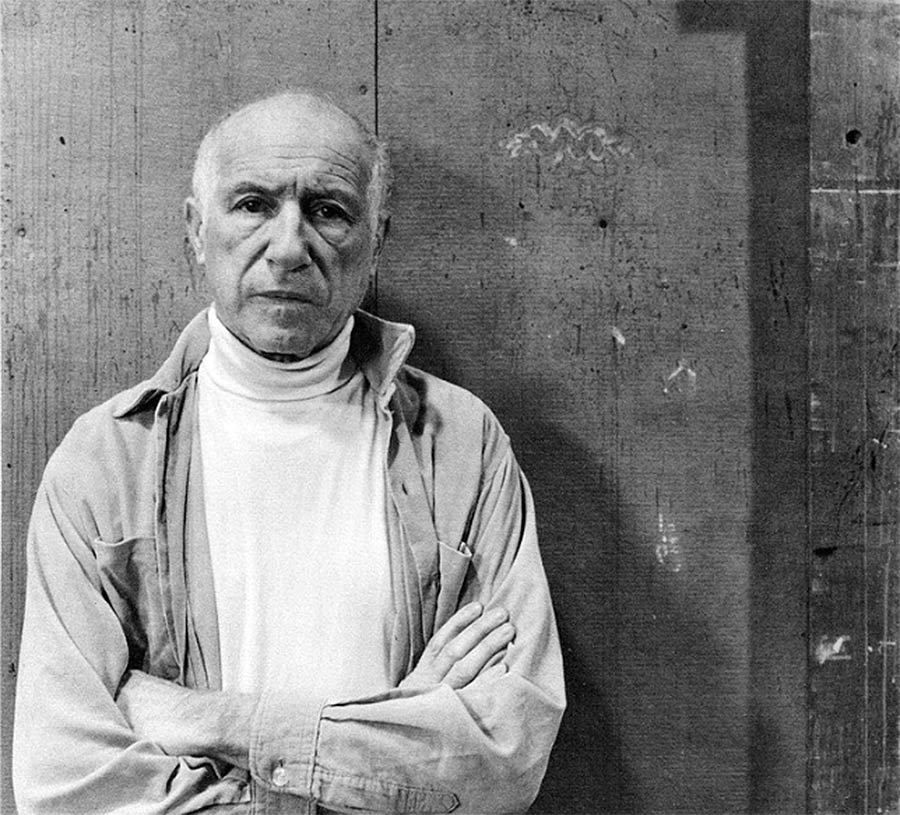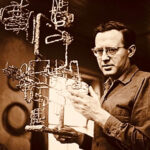Jack Tworkov
Jack Tworkov (1900-1982) was a pivotal figure in the American Abstract Expressionist movement, known for his distinctive blend of gestural abstraction and structural rigor. His artistic journey reflects a deep engagement with the evolution of modern art in the mid-20th century and a continuous exploration of form, color, and composition.

Early Life and Education
Jack Tworkov was born on August 15, 1900, in Biala Podlaska, Poland. In 1913, at the age of 13, he emigrated to the United States with his family, settling in New York City. Tworkov’s early years in America were marked by the challenges of adapting to a new culture and language. Despite these difficulties, he excelled academically and developed a keen interest in art.
After completing high school, Tworkov attended Columbia University, initially pursuing a degree in English literature. However, his passion for art soon took precedence, and he began studying at the National Academy of Design and the Art Students League of New York. At these institutions, Tworkov was exposed to a wide range of artistic styles and techniques, laying the foundation for his future explorations in modern art.
Transition to Abstract Expressionism
In the 1930s, Tworkov became involved with the Federal Art Project, a New Deal program designed to support artists during the Great Depression. This period marked the beginning of his professional career as an artist and provided him with valuable opportunities to exhibit his work and connect with other artists.
Tworkov’s early works were primarily figurative, influenced by European modernists such as Paul Cézanne and Henri Matisse. However, the dynamic artistic environment of New York City in the 1940s and 1950s, characterized by the emergence of Abstract Expressionism, profoundly impacted his artistic direction. During this time, Tworkov befriended key figures of the movement, including Willem de Kooning, Franz Kline, and Jackson Pollock. These interactions, along with his exposure to the works of European émigré artists, encouraged Tworkov to experiment with abstraction.
Artistic Evolution and Notable Works
Tworkov’s artistic evolution can be traced through several distinct phases, each marked by a deepening engagement with abstraction and an increasing emphasis on gestural brushwork and formal structure.
- “The Wheel” (1953) One of Tworkov’s most celebrated early abstract works, “The Wheel,” exemplifies his transition from figurative painting to abstract expressionism. The painting features a dynamic composition of swirling, gestural brushstrokes, creating a sense of movement and energy. The interplay of vibrant colors and bold forms reflects Tworkov’s exploration of the emotional and expressive potential of abstract art.
- “Barrier Series” (1957-1958)The “Barrier Series” represents a pivotal moment in Tworkov’s career, characterized by his increasing focus on structure and composition. In these works, Tworkov employed a more restrained and methodical approach to abstraction, emphasizing geometric forms and a limited color palette. The “Barrier Series” reflects his interest in the tension between spontaneity and control, a theme that would continue to shape his work in the years to come.
- “Q1” (1967)In the later stages of his career, Tworkov continued to refine his approach to abstraction, focusing on the interplay of form, space, and color. His “Q1” series, created in the 1960s and 1970s, represents the culmination of his artistic journey, characterized by a harmonious balance of gestural brushwork and geometric precision. These works reflect Tworkov’s mature style, marked by a deep understanding of the formal and expressive possibilities of abstract art.
Legacy and Influence
Jack Tworkov’s contributions to Abstract Expressionism and his innovative approach to abstraction have left an enduring impact on the art world. His work is celebrated for its emotional depth, formal rigor, and exploration of the tension between spontaneity and control.
- Influence on Abstract Expressionism: Tworkov was a key figure in the development of Abstract Expressionism, contributing to the movement’s emphasis on gestural brushwork and the expressive potential of abstract form. His work, along with that of his contemporaries, helped to define the movement and expand its expressive possibilities.
- Impact on Subsequent Generations: Tworkov’s innovative approach to abstraction and his exploration of the interplay between form, color, and space have influenced subsequent generations of artists. His emphasis on the tension between spontaneity and control continues to resonate with contemporary artists exploring the boundaries of abstract art.
- Continued Relevance: Tworkov’s work remains relevant and celebrated in the art world, with his paintings held in major museum collections worldwide, including the Museum of Modern Art in New York, the Whitney Museum of American Art, and the Smithsonian American Art Museum. His influence can be seen in the work of contemporary artists who explore themes of abstraction, structure, and the expressive potential of form and color.
Personal Life and Later Years
Despite his significant contributions to the art world, Tworkov remained deeply committed to teaching and mentoring young artists throughout his career. He served as a professor at several prestigious institutions, including Black Mountain College, Queens College, and Yale University, where he influenced a new generation of artists and helped to shape the future of abstract art.
Tworkov’s personal life was marked by his dedication to his craft and his continuous exploration of new artistic possibilities. He maintained close relationships with many of his contemporaries, including Willem de Kooning, Franz Kline, and Philip Guston, with whom he shared a deep commitment to pushing the boundaries of abstract art.
Jack Tworkov passed away on September 4, 1982, leaving behind a rich legacy of innovative and emotionally resonant artworks. His contributions to Abstract Expressionism and his exploration of the formal and expressive possibilities of abstract art continue to inspire and captivate audiences worldwide.
Conclusion
Jack Tworkov’s artistic journey is a testament to his dedication to exploring the depths of abstraction and his continuous search for new forms of expression. Through his innovative techniques and distinctive style, Tworkov pushed the boundaries of Abstract Expressionism and left an indelible mark on the history of modern art. His notable works, such as “The Wheel,” the “Barrier Series,” and “Q1,” exemplify his mastery of form, color, and composition, highlighting his unique approach to abstract art.
In celebrating Jack Tworkov’s life and work, we recognize his significant contributions to the development of Abstract Expressionism and his enduring legacy as a pioneer of abstract art. His paintings continue to inspire and captivate, reminding us of the power of art to evoke profound emotions and push the boundaries of human creativity.



